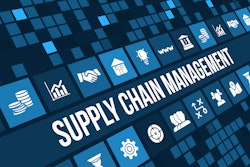
While supply chain and insurance industries are not often compared, they are both facing incredibly similar mounting pressures from external forces: tariff fluctuations, labor shortages, regulatory changes, volatile consumer demand, and much more. Supply chain leaders grapple with driver shortages, warehouse capacity constraints, unprecedented fraud, and unpredictable shipping rates. Insurance providers contend with claims adjuster shortages, regulatory compliance demands, and pressure to reduce processing times. Both industries rely on specialized professionals—often with specific licenses and certifications—and both face increasing demands to streamline operations while improving customer experiences.
All of these external factors create an environment where efficiency is no longer just desirable—it's essential for survival. While it may not be immediately obvious to supply chain executives, the parallel evolution happening in insurance can offer valuable insights on leveraging technology to create stability amid uncertainty.
As resources tighten and margins compress, the question becomes: how can these industries maintain service quality while achieving greater operational efficiency? The answer lies in strategic artificial intelligence (AI) implementation.
The path to greater efficiency with AI
The insurance industry, particularly led by InsurTech innovators, is undergoing three significant transformations that offer lessons for supply chain leaders:
1. From basic automation to Agentic AI
Insurance has moved beyond basic automation tools to embrace Agentic AI, (i.e. systems that can understand, decide, and act on behalf of both customers and professionals). Unlike simple chatbots that follow predetermined scripts, these intelligent systems use natural language processing and machine learning to handle complex interactions autonomously.
Voice-enabled AI systems, for example, now manage initial claim reports, collecting details and routing information to the appropriate specialists based on claim type and complexity. This advancement has significantly reduced missed calls, while ensuring that human adjusters focus on more complex cases requiring specialized expertise. By reserving human expertise for where it adds the most value, both industries can stretch limited specialized resources further.
2. Embedding intelligence into workflows
Rather than creating separate AI systems disconnected from core operations, forward-thinking insurers are embedding intelligence into existing workflows. This integration means that AI doesn't just handle isolated tasks—it enhances every step of the process.
When processing cargo insurance claims as an example, AI systems can automatically analyze shipping documentation, cross-reference it with policy terms, identify irregularities, and prepare the necessary information for human review. This streamlined approach allows licensed professionals to make decisions more quickly with all relevant information already organized and analyzed. AI works best when it's not a separate tool but an integral part of core operational workflows.
3. Creating hybrid service models
The most successful organizations that I interact with recognize that AI should enhance rather than replace human capabilities. Insurance remains a fundamentally human business where trust and empathy matter. The same is true for supply chain relationships.
Leading insurers are creating hybrid service models where AI handles routine processes while humans focus on complex decisions and relationship building. AI might manage policy questions and simple claims, but complex negotiations require the human touch. This balanced approach delivers efficiency while maintaining the personal connections essential to both industries. The goal isn't to eliminate human involvement but to deploy it strategically.
How can supply chains benefit when insurance evolves?
The evolution in insurance isn't just changing the insurance industry—it's creating tangible benefits for supply chain operations in several ways.
The most immediate impact comes through faster response times across critical touchpoints. When accidents or cargo damage occur, AI-enabled claims systems can process routine claims in hours instead of days, getting carriers back on the road faster. Insurance partners can evaluate new routes or shipping methods more quickly with AI assistance, enabling faster operational pivots when market conditions change. Additionally, coverage can be modified more rapidly to accommodate changing business needs without lengthy underwriting delays that previously disrupted operations.
Beyond speed, flexible insurance models that align better with supply chain realities are emerging. AI-enabled monitoring makes it possible to pay for insurance based on actual mileage or cargo value rather than flat annual premiums, improving cash flow management. Real-time risk assessment allows for more accurate pricing that reflects actual exposure rather than broad category estimates, reducing unnecessary premium costs. Proactive theft and fraud prevention reduces loss and avoids claims before they occur, improving outcomes for supply chain professionals and insurance partners. Insurance can be tailored to specific shipment needs rather than one-size-fits-all policies, ensuring protection matches actual risk profiles.
Enhanced self-service resources further streamline insurance management for supply chain operations. Digital tools provide round-the-clock access to policy information and basic support without waiting for business hours, while AI assistants can guide users through complex documentation requirements for international shipments. Consider the value of proactive risk alerts, where AI systems can identify potential issues before they become problems, such as warning about weather-related risks on planned routes, allowing for preemptive action rather than reactive crisis management.
To capitalize on these developments, supply chain executives should consider the following steps:
● Assess insurance touchpoints. Review all points where your operations interact with insurance—from cargo coverage to fleet policies to warehouse protection. Identify which interactions create the most friction or delay and prioritize these for digital enhancement.
● Engage forward-thinking partners. Seek insurance providers who are investing in agentic AI and digital transformation. The right partner will offer not just coverage but tools that streamline your operations and provide greater visibility into risk management.
● Develop internal AI readiness. Prepare your own team to leverage these advancements by ensuring your data systems can integrate with partner platforms. The supply chain companies to benefit most are those that can seamlessly share operational data with insurance systems.
In an environment where predictability is increasingly scarce, both supply chain and insurance industries are discovering that technological innovation—particularly in AI—offers a path to greater stability. By understanding how insurance is evolving and actively engaging with these developments, supply chain leaders can turn what was once just a necessary cost center into a strategic advantage.


















![Pros To Know 2026 [color]](https://img.sdcexec.com/mindful/acbm/workspaces/default/uploads/2025/08/prostoknow-2026-color.mduFvhpgMk.png?ar=16%3A9&auto=format%2Ccompress&bg=fff&fill-color=fff&fit=fill&h=135&q=70&w=240)

